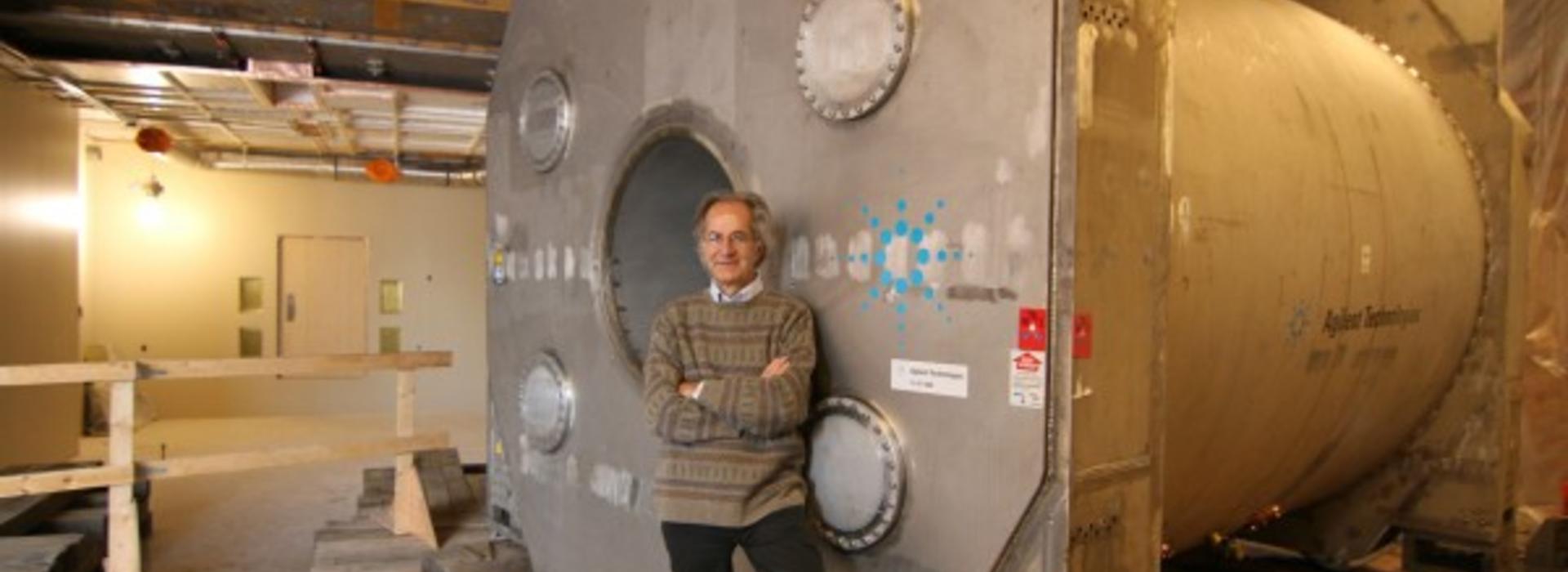
World’s Largest Imaging Magnet Arrives at the U of M’s Center for Magnetic Resonance
The University of Minnesota’s Center for Magnetic Resonance Research (CMRR) is now home to the world’s largest imaging magnet after its arrival to the University on Friday, December 6.
The Agilent Technologies magnet is the world’s first 10.5 Tesla whole body human magnetic resonance imaging (MRI) magnet. Tesla is a unit of measurement that describes the strength of magnetic field. By comparison, most medical MRIs utilize magnets are rated 1.5 – 3 Tesla or lower.
The University’s new magnet will be used to aid in brain research and human body imaging. Because a magnet of this strength has never been used to map the human brain and body, the first 5 to 10 years will be spent developing technology to create images researchers can use.
Because helium must be used to energize the magnet, a worldwide helium shortage delayed the 10.5T project for more than a year. After a month-long journey by boat from England across the Atlantic and through the Great Lakes, the magnet made its way from Duluth, Minn. to CMRR.
DHL was responsible for the oceanic shipping of the magnet and Perkins Specialized Transportation (Northfield, Minn.) transported the magnet via a trailer measuring 16-ft. wide by 150-ft. long that featured 64 wheels.
“CMRR pioneered the use of very high magnetic fields to study brain function. The 10.5T magnet is the culmination of the approximately two decade old effort, since the introduction of high field functional imaging to study the activity of the human brain, to reach currently unavailable resolutions and detail, even with the most advanced high field instruments currently operational in CMRR,” said Kamil Ugurbil, Ph.D., director of the Center for Magnetic Resonance Research. “We expect to take the study of the human brain to a new level of sophistication with this system.”
Ugurbil is also a part of President Obama’s 10-year, $100 million BRAIN Initiative Working Group, and believes the 10.5T magnet will play a critical role in mapping the human brain.
The magnet was made possible by an $8 million grant from the National Institutes of Health (NIH).
10.5T magnet specifications
- The 110-ton magnet was built at the Agilent Magnet Technology Center in Oxford, U.K.
- 40,000 liters of helium are required for the ramp up of the magnet and the energizing will take approximately 110 days to complete
- The rigging process alone took five days to complete
- Once the magnet is set in place, final construction of the custom-built iron box will proceed around the magnet which will take approximately 90 days
The magnet is anticipated to be ready for system development/research in July 2014.
For more magnet coverage please visit Star Tribune, WCCO-TV, KSTP-TV, MPR, Bring Me The News and Minneapolis/St. Paul Business Journal.